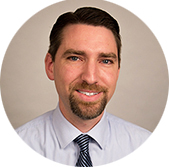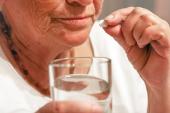Questions Raised Anew About Aspirin for Secondary Prevention of ASCVD
Guidelines still contain strong recommendations for aspirin’s use, but some are calling for new trials to confirm benefits.

A new editorial in JAMA Cardiology has rekindled discussions about the role of aspirin for secondary prevention in patients with atherosclerotic cardiovascular disease (ASCVD) and whether there’s a need for additional randomized trials to explore this question in the modern era.
When it comes to the use of aspirin for secondary prevention, “what we’ve got is dogma,” said John Cleland, MD, PhD (University of Glasgow, Scotland), who used his editorial to raise questions about the quality of the evidence supporting the practice.
Large randomized trials conducted several years ago—including ARRIVE, ASCEND, and ASPREE—knocked the use of aspirin in the primary prevention setting, showing no benefits or even harm (increased mortality in ASPREE). Nonetheless, some researchers who believe in aspirin continue to do further studies to try to find evidence that it is effective for primary prevention, Cleland told TCTMD, “but they still don’t want to discuss the problem that the evidence for secondary prevention is no better.”
Aspirin for secondary prevention took hold in the 1970s and 1980s, at a time when there wasn’t much cardiologists could do for patients with cardiovascular disease, he said. The practice has been bolstered by flawed meta-analyses suggesting that there might be an impact on risk of recurrent MI and stroke, yet there has been no single randomized trial definitively proving that aspirin has a benefit for secondary prevention, according to Cleland.
Moreover, the types of patients treated in those earlier studies are different from the types of patients with ASCVD that cardiologists are caring for now, Cleland said. The widespread use of statins and other lipid-lowering therapy “may have changed the environment in which antiplatelet agents are working in patients with chronic disease,” he said. “They reduce the plaque burden, so you don’t have the same amount of lipid gruel in the plaque and the thin fibrous cap that’s likely to rupture and cause a thrombus. You may be pushing people more towards plaque rupture due to bleeding. And so the antiplatelet therapy has got the potential to make things worse.”
Even so, based on the prior evidence, major practice guidelines have strong recommendations to provide aspirin for secondary prevention.
“I think the reason why so many people prescribe aspirin for secondary prevention is because that’s what the guidelines say they should do,” Cleland said. “They haven’t looked at the evidence for themselves. They believe in the experts who are telling them to do it. What I’m asking them to do is go back and look at the evidence themselves and see how convincing they find it to be.”
He also is calling for new trials to examine whether long-term aspirin is beneficial for secondary prevention in the modern era, saying that trials in which all antiplatelet therapy is withdrawn 3 to 6 months after a vascular event or procedure, for instance, should be conducted.
Controversial but Valid Questions
Commenting for TCTMD, John McEvoy, MBBCh (University Hospital Galway, Ireland), said raising questions about this practice is controversial in the sense that “guidelines continue to recommend aspirin for secondary prevention of CVD and recommend that aspirin be provided lifelong for secondary prevention. The current guideline stance on this is very clear.”
He said the trials in the setting of primary prevention sparked some reconsideration of the role of aspirin in secondary prevention, a topic broached by McEvoy and his colleagues in a 2020 review.
“There is probably going to be a push in the coming years, the near future, for a repeat of the trial data for aspirin in secondary prevention,” said McEvoy. “And this editorial will add to that argument, I think.”
Still, he pushed back on some of Cleland’s comments on meta-analyses—namely, that they are useful for confirming that conclusive trials are consistent with the accumulated evidence and that such analyses of inconclusive trials do not provide solid evidence of efficacy or safety.
“I would argue that that’s not fair on meta-analyses,” McEvoy said. “I do think that they can be used to collate the data from numerous trials, all showing signals for benefit but not independently showing a statistically significant benefit. I do think there’s a role for meta-analyses there to collate that type of data and to try and get a better statistical understanding of the numerical benefits seen in individual trials.”
McEvoy agreed, however, that the patients who require secondary prevention today are much different from those in the past and that there is sufficient equipoise to randomize patients to aspirin or no aspirin for secondary prevention—particularly among older individuals and those who are further removed from their ASCVD event. “I would not be advocating personally, at this point, for a trial of aspirin discontinuation within a year of the event, even once the acute event had settled. Certainly a year or more after the event, if the patient remains stable, hasn’t had a recurrent event, then I think there is equipoise and certainly equipoise in older adults.”
A Shift in Thinking
Schuyler Jones, MD (Duke University, Durham, NC), was co-principal investigator of the ADAPTABLE trial, which found that an 81-mg dose of aspirin was just as effective as a 325-mg dose for the prevention of major cardiovascular events among patients with ASCVD. Although Cleland says in his editorial the trial was a “lost opportunity” since it didn’t include a group of patients who avoided antiplatelet therapy altogether, Jones told TCTMD that it would have been unthinkable to do so when the study was started nearly a decade ago.
“In 2015, there was no question in any cardiologist’s mind that those patients with chronic coronary disease should be taking aspirin,” he said. Now, he added, “we do, I think, have more ability to have equipoise for . . . a clinical trial of aspirin versus no aspirin. But 10 years ago, people weren’t even willing to randomize to the 81 or 324 because every cardiologist knew they knew the answer, and so they didn’t even want to ask it. It would still be a tough study to do, and it would still be something where you’re breaking the tradition of what cardiologists have learned for many decades.”
Jones is skeptical that a placebo-controlled trial of aspirin for secondary prevention will be done, citing the need for tens of thousands of patients and tens of millions of dollars to make it happen. And it would be even more difficult considering that there are an estimated 90-95% of patients with chronic coronary disease still using aspirin for secondary prevention around the world, he said.
Views are shifting somewhat on aspirin for secondary prevention based on the impact of the primary prevention trials released about 6 years ago, Jones said, “but I think that most people are going to stick with aspirin for their patients, just because it’s what they’ve done.”
He highlighted the strong guideline recommendations, too, adding, “I’d be a little hesitant without data to say we should change our practice.”
Eyeing Short-term Use
Cleland indicated that the data regarding the benefits of aspirin shortly after a vascular event are stronger than the evidence around longer-term use. He pointed to the ISIS-2 trial, which included 1 month of aspirin treatment among patients with suspected MI. This led to a clear reduction in vascular mortality at 5 weeks.
“If you then go back and you look at the postinfarct studies, they do indeed say the closer they are to the infarct and for that first 6 weeks or so, there is evidence that the aspirin is doing some good,” Cleland said. “And I think that people just said, well, if it’s doing good for 6 weeks, give it forever. But you wouldn’t do that with an antibiotic or r any other medicines. You would take them while you had the acute problem and then you’d stop it, and that’s exactly what ISIS-2 did.”
He added that 10-year follow-up of ISIS-2 showed that the early benefits of short-term aspirin therapy held up many years later, with other trials suggesting similar findings.
In the acute setting of an MI, when the plaque has ruptured, “you’ve now basically got an ulcer on the surface of your coronary artery, which is very thrombogenic, [so] giving an aspirin in that setting is likely to do good because you can’t bleed into the plaque anymore because it’s already ruptured,” Cleland said. Once everything is healed, however, “you might stop thrombus with aspirin, but you’ll increase bleeding with aspirin. And so you’re giving with one hand and taking away with the other. And we don’t know which is the best thing to do. And maybe they just cancel each other out.”
Overall, he said, “my point of view is that we’ve got pretty good evidence that giving aspirin for 28 days is beneficial. I could eke that out to 3 months based on some slim evidence. But beyond 3 months, we really don’t have the evidence and we could be doing more harm than good.”
This is an important issue to work out because there are millions of people taking aspirin—with its potential complications—every day, Cleland said, noting that there are implications for drug development and the economics of healthcare as well. Companies are trying to develop new and improved antiplatelet drugs based on the perceived need for such treatment for secondary prevention.
“I think that we need to sort out whether people are chasing the right concepts, whether this is worth investing billions of dollars in,” he said.
This issue is part of a larger discussion about how therapies should be given to patients with cardiovascular disease, McEvoy said. “We’ve taken an approach, which is understandable, around new therapies being added to the approved guideline-recommended therapies at a given time. So it’s this kind of add-on approach.”
But, he continued, “there’s been increasingly a move to look at whether or not we can start to subtract in the context of modern therapy.”
In heart failure, for instance, patients are now being treated with up to six guideline-recommend medications. “And some of those medicines in the context of the newer add-on therapies may not be as effective as we once thought they were,” McEvoy said. “We need to think about not just adding on every time we have a new evidence-based medicine, but maybe [also] think about where we can do some subtraction.”
Todd Neale is the Associate News Editor for TCTMD and a Senior Medical Journalist. He got his start in journalism at …
Read Full BioSources
Cleland JGF. Aspirin for secondary prevention of atherosclerosis—evidence or dogma? JAMA Cardiol. 2024;Epub ahead of print.
Disclosures
- Cleland reports receiving grants from Bayer for epidemiological work on the COMPASS trial about 5 years ago outside the submitted work.





Comments